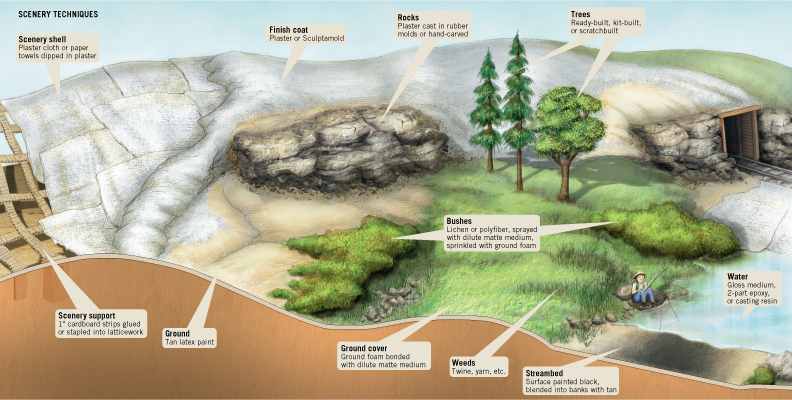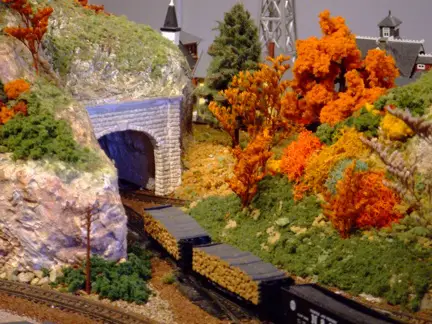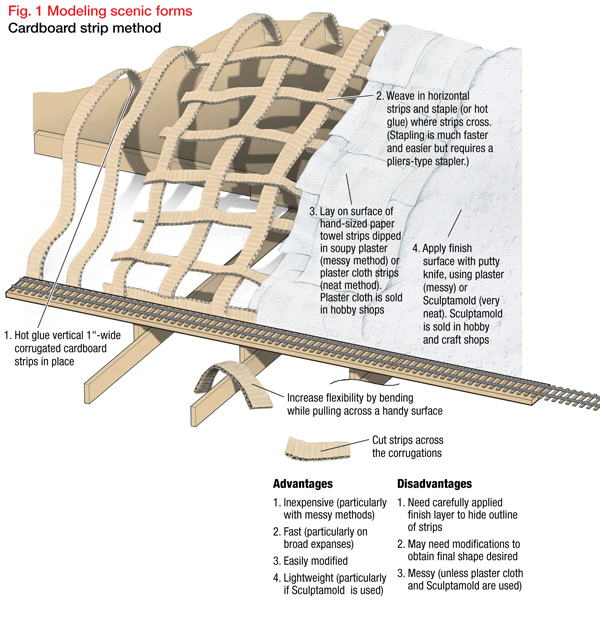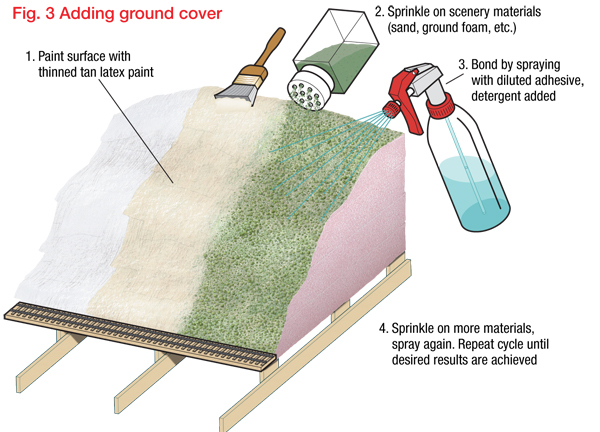Model Railroad Scenery Basics Terrain You can add different landscapes such as mountains valleys and river beds. When planning your model railroad make room for both.

Model Railroad Scenery Making Realistic Rock Scenery Using The Right Colors Youtube
The sheets can be held together temporarily with wooden skewers and weighted with paint cans or.

. Cut off as much double stick tape as you need to cover the surface and affix it onto the area. Structures take up space. So do the slopes and drainage ditches along the right-of-way.
On a permanent layout large scenic forms like mount. You can quickly spread large amounts of ground foam dirt and sand onto your layouts without much trouble and end up with fairly realistic looking scenery. First he demonstrates a simplified painting technique to use rather than free handing the edges.
Your hills and valleys are going to be made of insulation board or plaster neither of which comes in. Tom reveals some of his secrets for painting model railroad backdrops to help create a fluid transition. Ad Free Shipping No Sales Tax.
Rock formations It refers to the various types of formations such as cliffs and walls of stones. When it comes to spreading small pieces of landscape on your model railway layouts few tools are more apt for the job than your fingers. Chicken wire window screening or cardboard webbing covered with paper towels soaked in a soupy plaster mixture for the basic substructure.
How to build model railroad scenery base for your train layout in any scale using plaster and cardboard. I make my scenery for my train layout a little different than other people. In this video we discuss and demonstrate various techniques used to create landforms hills and terrain as it relates to model railroads and model dioramas.
This is really simple. How to Shape Terrain Mountains Rivers And Other Scenery On A Model Railroad. 12 Issues of Model and Railroader for 3450.
Jim begins with a basic shell formed from chicken wire and hydrocal plaster dipped cloth. Selecting Your Base Cover. Your model railroad scenery should reflect the general locale that you have decided to model which in turn should fit realistically with your theme.
Sculptamold is very easy to work with and dries quickly. Stick rocks debris and plastic parts on the tape. Tunnels This is another essential feature that you must recreate for the model.
Make allowance for the buildings you plan to install. This method can be used to effectively block view of the interior of passenger cars or structures that lack detail. This would include not only mountains valleys cliffs riverbeds and gorges but also meadows fields undulating landscapes and any other land form that you could imagine.
To help you fill in those expansive hillsides in your scene NMRA Expert Modeler Gerry Leone demonstrates one of his favorite simple model railroad scenery techniques. This works for me-----. The first tip Gerry introduces is a simple method for creating frosted glass using transparent tape.
Sculptamold on Model Railroads. Join the MRA community to access a huge library of model railroad instructional videos. Developing model train scenery has to start with the process of making terrain.
Flinging plaster is a quick and easy technique that you can use to develop a lot of rock work on your railroad. Terrain Model train scenery_terrain. He shows you how to use polyester fiber fill a soft pliable material popular among quilters to create nondescript vegetation that takes up a fair amount of space in a scene.
Get tips and techniques from us and build fantastic environment for your trains. In either technique gaps can be filled in with a product called Sculptamold. It is mixed with water similar to plaster.
With the topography hills of your layout suitably placed and your track laid latex paint is your next best friend. Four Classic Model Railroad Tips. For example your logging train.
There are traditional methods of building up the terrain base that have worked well over the years. When packed around the edges of plaster cloth features it makes a great broken rock simulation on scale model railroads and dioramas. Ad Free Shipping Available.
One involves piling blocks of styrofoam on top of each other and gluing them together with white glue or drywall caulking material. Many model scenery projects can be completed with materials that you already have laying around the house or that you can find in your backyard. How to create land forms terrain mountains and valleys various model railroad scenery tips.
Building scenery for model railroads is one of the most enjoyable aspects of model railroading. Model Train Scenery - Things to Keep in Mind. If possible find out the footprint of the industries you want to put beside those sidings or leave a little extra space.
Model Train Scenery Plaster. Cover the tape with the powder so it sticks down and is laid out evenly. Second he explains the right brush strokes to use to help hide any evidence of where the strokes start and end.
There are several well-known techniques. Latex can be easily mixed and thinned with water and should cover every area of ground cover you plan to show on your model railroad layout. Ad Scaled Realistic Layouts Scenery Cars Figures Buildings More.
Sprinkle a differently colored powder on top and.

Scenery Basics For Model Railroaders Modelrailroader Com

Scenery Backdrop Tips And Techniques For Model Railroads

How To Make Model Railroad Scenery

The Definitive Guide To Making Model Scenery Model Railway Engineer The Multi Award Winning Model Train Blog

Get Tips For Building Scenery For Model Railroads



0 comments
Post a Comment